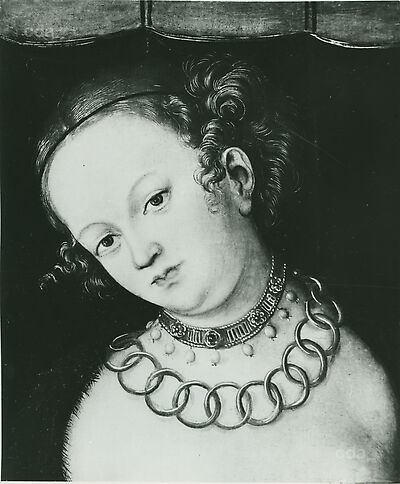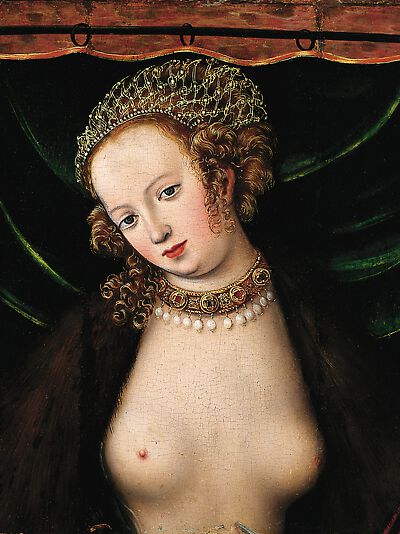- Attribution
- Lucas Cranach the Elder
Attribution
| Lucas Cranach the Elder | [Friedländer, Rosenberg 1979, 118, No. 240L] |
- Production date
- about 1526 - 1537
Production date
| about 1526 - 1537 | [Friedländer, Rosenberg 1979, 118, No. 240L] |
- Dimensions
- Dimensions of support (fragment): 19.5 x 16 cm
Dimensions
Dimensions of support (fragment): 19.5 x 16 cm
[Friedländer, Rosenberg 1979, 118, No. 240L]
Slightly differing measures after Koepplin: 18 x 15.5 cm [handwritten annotation D. Koepplin on the reverse of a photograph in the Archive D. Koepplin]
- Signature / Dating
None
- Owner
- Private Collection
- Repository
- Private Collection
- CDA ID
- PRIVATE_NONE-P230
- FR (1978) Nr.
- FR240L
- Persistent Link
- https://lucascranach.org/en/PRIVATE_NONE-P230/

